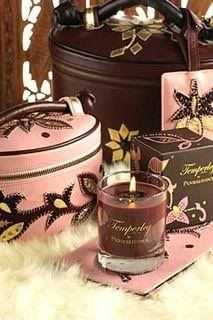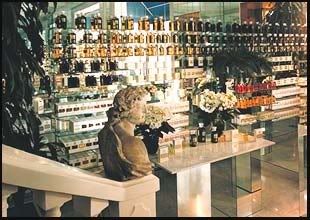The 16th century dock workers required by law to wear a no-pockets-and-no-cuffs uniform are but a small testament to the power of pepper: they often risked their lives trying to sneak peppercorns by stuffing their clothing! As pepper was worth its weight in gold ~by representing a steadier currency (coins were often counterfeited with other alloys) and one of the ways to keep foodstuff for long in a time before refrigerators~ the necessity of perilous, long voyages to exotic lands of the East had seamen reach India to break through the Venice and Genoa monopoly of the Spice Route during the Middle Ages and rulers intent on keeping the spice road clear for caravans to safely bring pepper westwards.

Hippocrates recommended pepper in medicine while the Romans used it so much that the road of spice trading was called Via Piperatica (Pepper Street). It’s no coincidence that both Attila the Hun and Alaric I the Visigoth demanded part of Rome’s ransom in pepper (recalling the comparable custom of paying Roman legionnaires part of their wages in salt). In a time when bribes of prospective voters were circulating in the form of the spice, dowries included pepper, and suitors who tried to marry upwards were literally forced by aristocrats to gurgle on pepper; there were men who were the salt of the earth but who were not worth their pepper, alas! The latest
Le Labo, Poivre 23, is redolent of the demonic yet much desired aura of pepper, the King of Spices: after all Bourbon pepper is named after the Bourbon dynasty of French kings (Which makes one wonder why this is the London and not the Paris exclusive!)
Le Labo being loyal to the self-pronounced name on the bottle? If you’re still questioning your nose while smelling the tarry, smoky facets of
birch tar rendering oily,
leather-like notes in
Patchouli 24 (and less so in
Ciste 18), you know what I am talking about. And yet, contrary to the criticism received, the name is only meant to apply to the top note (the initial impression, might we say more accurately) and the number of ingredients.
My own criticism of the brand lies elsewhere and I have resisted voicing it for long. Since they believe“Writing about perfume is like dancing about architecture” there isn’t much of a chance they’re checking online publications anyway, so I might as well get it off my chest.
Fabrice and Eddie, the owners of the “perfumery lab” at 233 Elizabeth Street in New York are two fragrance industry veterans who aimed to apply their noses in an unconventional project. The concept of lab-robbed technicians pouring the juice that very minute into your own name-tagged bottle, bearing the date of mixing and an “expiry” date in typewriter font (clinic chic!) is repelling to me in anastrophe, making me view the contents as pasteurized milk rather than a great vintage of dry red wine. Le Labo says a propos: “The last-minute formulation allows the composition to stay “fresh” and retain the fullness of its fragrance, in particular its delicate top notes, and to preserve the intensity required to shock. Made-to-order means that the essential oil concentrates in the perfume remain separate from the alcohol right up to the moment of purchase. Only then do our lab technicians proceed to the final formulation of the perfume, then bottle and label it with your name and the date of fabrication”. Actually the maturation of the jus is an integral part of the creation process and not necessarily the first step into decay. The personalized touch was originally meant to denote a custom-made feel but I sense that it is more of a marketing drivel for the “aware” customer. The reluctance of handing out physical samples because "All natural fragrances are not meant to be sampled; if you try them from a sample they aren't as good» (the frag “was better in the original bottle”)left me doubting my ears.
Secondly, and adjacent to the erroneous “all natural” lapse above, their claim of ingredients coming from Grasse is somehow making perfumephiles think they are of some superior quality to others. People who have been in Grasse can attest that ingredients manipulated there are sourced all over the place, so it is not like this element alone provides credentials of excellence. I am willing to accept that it is all a matter of confusion and misquoting nevertheless (in which case, dear Le Labo, please mail me for discussion) These points aside
Poivre 23 is good. Let me elaborate.
Poivre 23 London follows City Scents previously created by Le Labo for New York (
Tubereuse 40), Los Angeles (
Musc 25), Dallas (
Aldehyde 44) , Paris (
Vanille 44) and Tokyo (
Gaiac 10) in what is no doubt an exasperating, old but brilliant move towards providing a coveted luxury item: that which cannot be had easily! Poivre (pepper) refers to the Piper genus in the Piperacae family and not the Capsicum one of the Solanaceae family (which includes green, red, chili and generally an assortment of edible peppers).
The nose behind Le Labo
Poivre 23 is
Nathalie Lorson, a perfumer currently at Firmenich, Paris (formely at IFF), who was raised in Grasse, the traditional perfume capital of France. She is responsible for a diverse portfolio that encompasses the almost universally pleasing
Bulgari pour Femme, the modern classic aldehydic floriental
Dolce & Gabbana Femme, the recent re-issues of Lancôme
Peut- Être and Aqua di Parma
Profumo, as well as several Adidas fragrances and the one for Kate Moss. She has also signed the three latest fragrances by Lalique: the pre-empting
Perles with its peppery musky background, the disturbingly appealing earthy vetiver of
Encre Noire and the blackberry muskiness of
Amethyst. As she confided: “I try first and foremost to serve the project, which can lead me to explore unfamiliar territory… and to rein in my ego!” Yet the familiar suppleness of her compositions is definitely there.

Nathalie’s spicy-woody personal totem is
Déclaration for Cartier, so it’s no wonder she harnessed the untamed demon into supplication so suavely. I am a self-admitted spice lover and pepper is one of my favourite notes, heavily used in perfumery to elevate compositions into something simultaneously hot and cold (
Opium by Yves Saint Laurent), or to bestow its brilliance, such as in
Piper Negrum by Lorenzo Villoresi.
Poivre 23 goes for an orientalized take on the prized material fusing subtle citrus elements with exotic woody notes such as a whiff of patchouli, some gaiac and Australian sandalwood (different than the Indian variety). The whole is suffused into a warm, radiating, rather sweet (I am tempted to say liqueur-tinged) aura with inviting tobacco undertones; smoke rising in slow rings over the canopy of an opium den.
The pepper note vanishes soon; essentially true to its “short” nature (“short” spices give an intial jolting impression but do not last, as opposed to “long” ones which are retained into the aftertaste). In that regard
Poivre Piquant by L’artisan is more of a true pepper, with the longevity issues of what that entails as well. What are left from
Poivre 23 are sweet nothings spoken in a contralto sostenuto for hours. That would have amber and darkish vanilla lovers, as well as fans of the
perversely un-foodie vanilla of Shalimar, enraptured. Compared to their Paris exclusive
Vanille 44,
Poivre 23 is spicier, a tad less ambery and woodier with echoes of the less complex
Gaiac 10 (the Tokyo Exclusive); something that leads me to believe it would be a good hit with men perfume lovers compared to that one, without alienating women fans.
I don’t especially condone the practice of super-exclusive perfumes for the heck of it through my retail shopping, nor do I think that the price asked for such a huge amount of extrait de parfum (the only concentration available) is completely justified. Therefore I left empty-handed. However I asked if there is the option available to some of their other scents in other cities of creating a silicone-based roll-on product fit for the purse. The kind sales assistant informed me that she would ask and a relative is instructed to go back and pick it up if it materializes. I will keep you posted if so!
Notes for Le Labo Poivre 23 (London exclusive):Bourbon pepper, citrus,
incense,
cistus labdanum, Australian sandalwood, patchouli, vanilla, gaiacwood, styrax.
Le Labo
Poivre 23 is exclusive to Liberty, London, available in Extrait de Parfum (pure parfum) in sizes of 50ml, 100ml and 500ml. (£120 for 50ml, 240.00 for 100ml; I didn’t dare find out the price for 500ml of pure parfum).
The official site (
http://www.lelabofragrances.com/) is seriously appealing from an artistic point of view.
Pic of peppercorns via greekfood.about.com. Asian woman smoking originally uploaded on MUA
 Ormonde Jayne Perfumery is delighted to launch its fourth point of sale in London at Fortnum & Mason in Piccadilly from this Monday 12 September. Fortnum & Mason will stock Ormonde Jayne’s Bathing range (including Osmanthus Soap Bar & Dish), Scented Candles and a new exclusive Trilogy of Extrait de Parfum (pure parfum) (the set includes Tiare, Tolu & Ta’if) on the second floor.
Ormonde Jayne Perfumery is delighted to launch its fourth point of sale in London at Fortnum & Mason in Piccadilly from this Monday 12 September. Fortnum & Mason will stock Ormonde Jayne’s Bathing range (including Osmanthus Soap Bar & Dish), Scented Candles and a new exclusive Trilogy of Extrait de Parfum (pure parfum) (the set includes Tiare, Tolu & Ta’if) on the second floor..jpg)




.jpg)



.jpg)



